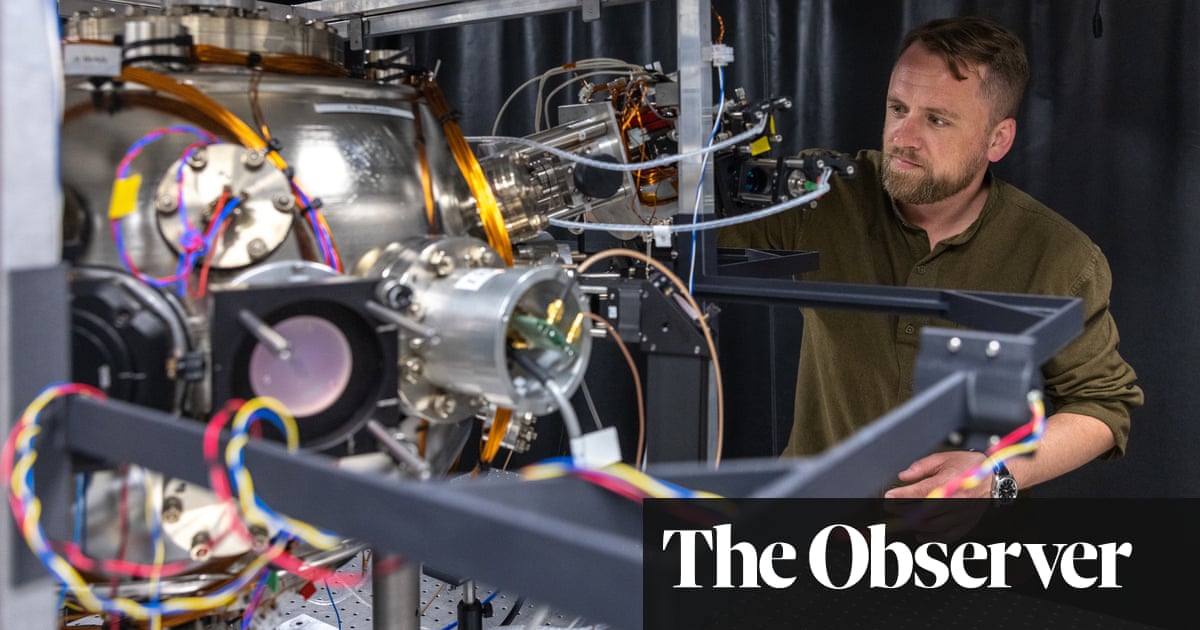Dr Joseph Cotter takes some unusual pieces of luggage on his trips on the London underground. They include a stainless steel vacuum chamber, a few billion atoms of rubidium and an array of lasers that are used to cool his equipment to a temperature just above absolute zero.
While not the average kit you would expect to find being dragged into carriages on the District Line, this is the gear that Cotter – who works at Imperial College London’s Centre for Cold Matter – uses on his underground travels.
Though the baggage may be bizarre, it has an ambitious purpose. It is being used to develop a quantum compass – an instrument that will exploit the behaviour of subatomic matter in order to develop devices that can accurately pinpoint their locations no matter where they are placed, paving the way for the creation of a new generation of underground and underwater sensors.
The ideal place to test it is the London underground, Cotter and his team have discovered. “We are developing very precise new sensors using quantum mechanics, and these are showing great promise in the laboratory,” he told the Observer last week. “However, they are less accurate in real-life settings. That is why we are taking our equipment to the London underground. It’s the perfect place for smoothing out the rough edges and getting our equipment to work in real life.”
The idea of a quantum compass is to bypass or augment current methods for pinpointing the locations of planes, cars and other objects. These usually rely on global navigation satellite systems (GNSS) – such as GPS – which have become crucial in the transport of goods and services by road, sea and air. By using external signals, these systems can precisely fix the positions of vehicles.
But GNSS devices are vulnerable to bad weather and jamming, and do not work underwater or underground, and their signals are often blocked by tall buildings and other obstructions. The aim of the Imperial College project – which has been backed by UK Research and Innovation’s Technology Missions Fund and the UK National Quantum Technologies Programme – is to create a device that is not only accurate in fixing its position, but also does not rely on receiving external signals.
“Then you don’t have to worry about signals being lost or blocked by high-rise flats,” said Dr Aisha Kaushik, another member of the Imperial Centre for Cold Matter team. “You will have more confidence in knowing where you or your vehicle is at a particular time.”
after newsletter promotion
At the heart of the quantum compass – which could be ready for widespread use in a few years – is a device known as an accelerometer that can measure how an object’s velocity changes over time. This information, combined with the starting point of that object, allows its future positions to be calculated. Mobile phones and laptops possess accelerometers but these versions cannot maintain their accuracy over lengthy periods.
However, quantum mechanics offers scientists a way to provide new precision and accuracy by measuring properties of supercool atoms. At extremely low temperatures, atoms behave in a “quantum” way. They act like matter and like waves. “When atoms are ultra-cold, we can use quantum mechanics to describe how they move, and this allows us to make accurate measurements that tell us how our device is changing its position,” said Cotter.
In the devices – which have been carried on board London underground track-testing trains and not on commuter services – rubidium is inserted into the vacuum chamber that lies at the machine’s heart. Powerful lasers are then used to cool these atoms to a fraction of a degree above absolute zero (−273.15C). In these conditions, the wave properties of the rubidium atoms are affected by the acceleration of the vehicle that is carrying the equipment, and these minute changes can be measured accurately.
The system has been found to work well in a stable laboratory but needs to be tested in more extreme conditions if it is to be turned into a transportable, standalone device that can be used in remote or complex locations, added Cotter.
Tube train tunnels are ideal for this task, and London Underground stands to gain from new quantum sensors that would remove the need for the hundreds of miles of cabling that is currently installed to track the location of the 540 trains that zip below the capital at peak times.







